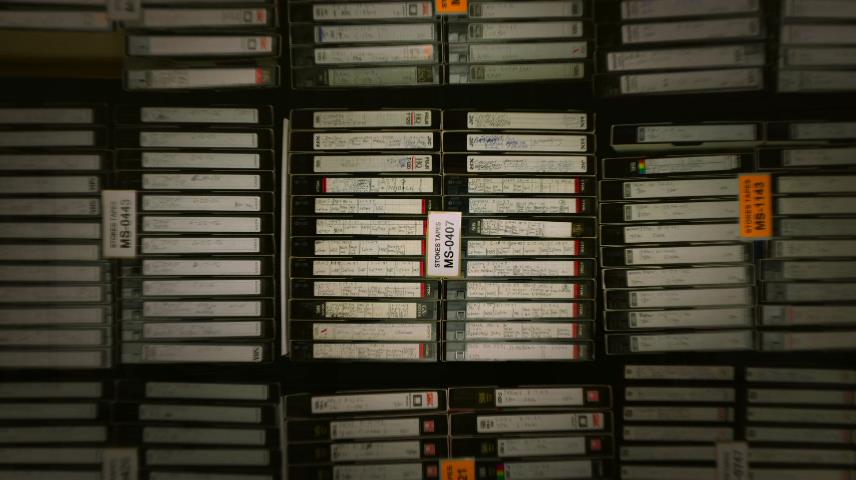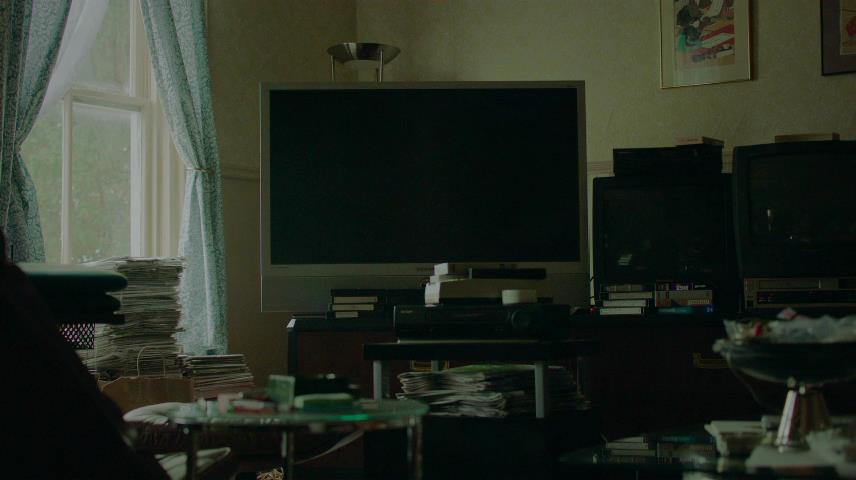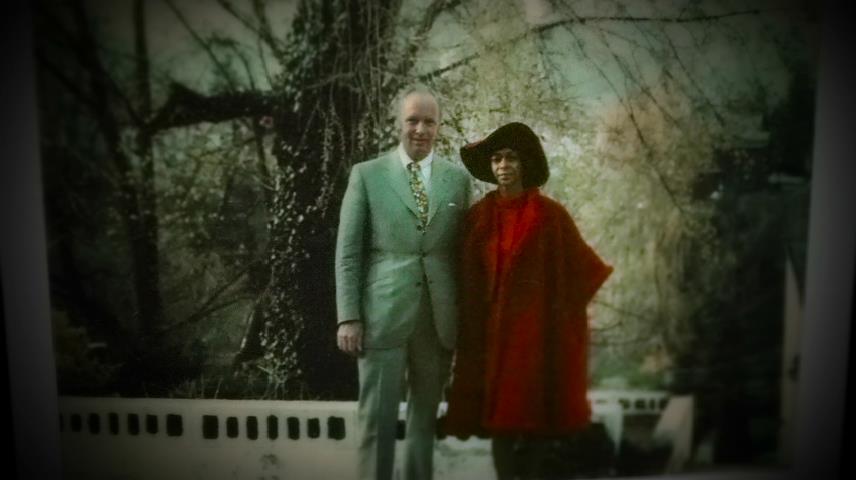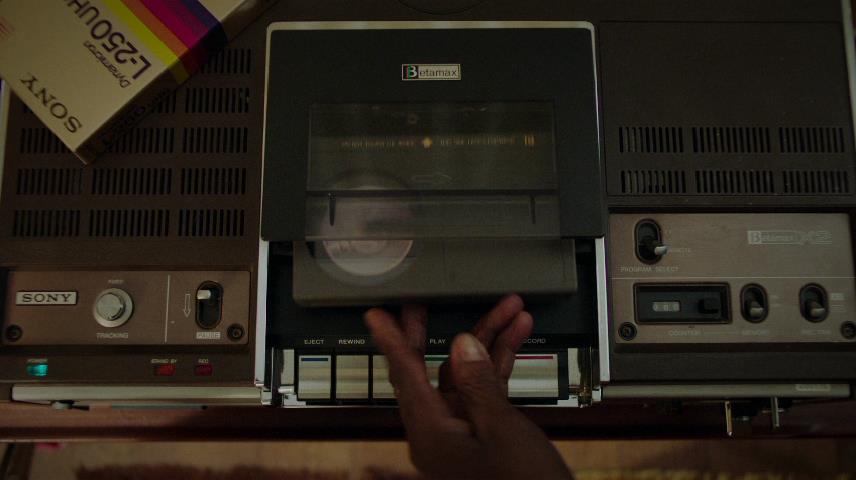| Reviews & Columns |
|
Reviews DVD TV on DVD Blu-ray 4K UHD International DVDs In Theaters Reviews by Studio Video Games Features Collector Series DVDs Easter Egg Database Interviews DVD Talk Radio Feature Articles Columns Anime Talk DVD Savant Horror DVDs The M.O.D. Squad Art House HD Talk Silent DVD
|
DVD Talk Forum |
|
|
| Resources |
|
DVD Price Search Customer Service #'s RCE Info Links |
|
Columns
|
|
|
Recorder: The Marion Stokes Project
Every once in a while a documentary comes along about a person you may never have heard of, but by the end you find them almost as memorable as a fictional movie character. Like many, I heard about Philadelphia resident Marion Stokes only after she had died. The word got out that she had amassed over 70,000 videotapes (though after an actual count it seems to be closer to only 40,000) with over 30 years' worth of TV news recorded on them. Not having had access to a VCR myself until 1985 but being long intrigued by old TV recordings as a way of time travel, this sounded like a gold mine. Having made a few off-air recordings myself mainly of movies in the 80s, the only news I got on tape was the local news updates during the commercial breaks (which I always left in as I knew they'd be valuable later). I've also amassed a good amount of tapes recorded by others and have found some vintage newscasts recorded usually by accident, such as a collection from a Lawrence Welk fan in Cleveland who often recorded that show and then left the recorder going for the local news that came on immediately afterwards, never recording over it and preserving it for eternity. (I upload many of these tapes to YouTube and one of the most popular has been the complete channel 8 newscast from Christmas Eve, 1977. It may be the only copy in existence.) In other cases I considered myself lucky if I got just the opening few minutes of the newscast that followed a popular TV show, before the recording was stopped or the tape ran out.
rn
Marion was someone who always questioned things, rarely accepting anything as the truth. She began to watch TV news not as a way to stay informed, but to watch closely for ways the presenters would try to twist the facts to suit their agendas and hide anything they felt the general public was better off not knowing about. In 1976 she acquired one of the first Betamax decks- blank tape was quite expensive back then and we aren't told exactly what she did with that first machine, but she often recorded news reports for their historical value and thought that the stations would not save all of the footage themselves. In my experience I've found even when footage has been saved, the holders don't make it very easy for us common folk to see it and home recordings are all we can get our hands on, and that's if we're lucky. By the Iranian Hostage Crisis in 1979, Marion's taping became an obsession as it was covered extensively on TV. One of her reasons for recording that was to catch newscasters giving some things as fact one day only to contradict it the next. It's said from that point she never stopped recording, acquiring many more VCRs and eventually running them 24 hours a day after cable news channels came on the scene starting with CNN in 1980. Her housekeeper says that it was always someone's job to change the tapes when she wasn't around, and she'd get agitated away from home if she knew a tape was running out and nobody was around to switch it to a new one and keep recording.
rnIt isn't said how or even if she actually watched these tapes later, but she at least did scribble notes about the main events on them- one task given to her ‘staff' eventually was to make proper labels for them. Her son remarks that on the day she died, her apartment was routinely filled with the sounds of cable news channel announcers and that the silence was odd when the TVs and recorders were finally turned off. She also hoarded a number of other things- lots of books including multiple copies of some, and seemingly many Apple computers as well which she collected and also gave to friends. She even rented a number of other apartments just to store these things. She did go out quite a bit for fun, but still made sure her VCRs were running while out. This is where I have to interject my criticism- footage from these tapes is interspersed throughout showing historic events like 9/11 and the shooting of president Ronald Reagan alongside ephemeral clips like 100+ year old twins celebrating their birthdays and a few flashes of commercials. I must say that it's a shame that the entire program is encoded at 24 frames per second- this means that all of the video footage is shown at the reduced frame rate. Perhaps director Matt Wolf felt this made it look more "cinematic", but it took away the realness of it at the same time. On top of that, the quality of many of the tapes themselves appears quite poor. She used the slowest recording speeds possible (which I was guilty of in the 80s, as I liked to fit as much as possible on one tape and also save money) and even worse her analog cable reception was often atrocious. There is some fairly recent footage including CNN as the year 2000 rings in with a lot of analog snow in the picture that I wouldn't have tolerated for a minute- generally bad reception was a big reason why I gave up on cable early on. It's likely she didn't acquire a VCR capable of recording stereo broadcasts right when that came around (1985) either. If I stumble upon any recorded tapes from that year or later recorded in mono, they are immediately thrown out. Tapes recorded during the 1979 hostage crisis actually look a lot better than the later material- the reception is fine there and it's a relief to actually see the screen free of constant text and graphics that now covers a percentage of today's newscasts.
rnNevertheless, Marion's family recognized that this collection would be her legacy, and made sure that it did not end up in a landfill. While it took a while to find any takers, eventually Roger MacDonald at the Internet Archive (archive.org) heard of them and arranged to have them taken across the country to the Archive's headquarters in California. Since then they've been uploading them to their site although to do them all will take quite a bit of time. (While I've uploaded things to Archive.org myself and found the quality quite good, it is a bit harder to find things there than say YouTube.) Some say that her collection likely includes footage that would otherwise be lost to time.
rn
I have to thank Kino for releasing this title on Blu-Ray, given how many documentaries are relegated to the antiquated standard DVD format. Given that much of the footage here consists of standard-def tapes, that would be even more reason to forego a Blu-Ray release but the format allows it to look as good as possible. All of the current footage is shot on digital and looks good, aside from some minor banding in a few places. But I must ask again- why, oh why, was the entire production encoded in 24fps? This gives a jerky appearance to all of the videotaped excerpts, taking away their live look that makes such tapes so much fun to watch.
rnThe 5.1 DTS Master Audio mix provides a few surprises- collages of sound clips from Marion's tapes are panned around all channels to simulate the effect of being literally surrounded by news. Owen Pallett's rather calming music score also flirts with the rear channels at times, but is kept completely isolated from the center. (For a more neutral presentation you could simply disconnect all other speakers and view it with no music at all.) There's also a separate 2-channel track for whatever reason, and subtitles are also included.
rn
Director Matt Wolf provides a commentary talking a bit more about what he learned about Marion (it's said that she never used the internet) and what interested him about the subject. He found the more obscure and mundane news events more fascinating than the major ones. Three hourlong episodes of the Philadelphia public affairs show "Input" dating from the late 1960s are also included- all three include Marion Metelits as she was known then alongside a panel of religious and philosophical figures. These were transferred from master tapes and look great, thankfully at the proper video frame rate. I'm glad these were preserved as it's a truly forgotten part of TV- these types of shows were usually aired on Sunday mornings with no commercials as a community service by the stations, and skeptics usually claimed that nobody actually watched them. I remember suffering through a few of these types of shows waiting for cartoons to come on afterwards. I enjoyed the shows included here for the clear depictions of the fashions and psychedelic sets (they also used Mason Williams' "Classical Gas" as the theme music) but so help me I got lost on what they were actually talking about. Two shows talk about violence and one participant theorizes that it's simply in human nature to blow off steam and hurt someone in the process, but they go so far off into random subjects that eventually you have to give up trying to follow it. The conversations don't even end- when the time reaches its limit, the studio lights simply dim and credits roll as they keep on talking. Finally there's trailers for Recorder along with ones for The Woman who Loves Giraffes, Be Natural: The Untold Story of Alice Guy-Blache and Bombshell: The Hedy Lamarr Story.
rn
The excessive taping of things that most VCR owners never bothered taping is what drew me to this documentary, but plenty of time is also spent on other eccentricities of her life. Most viewers will probably remember Marion as a person from this more than anything else. Had I met her, I likely would have told her that I admired her dedication to saving so many news broadcasts but be concerned that she didn't seem to pay so much attention to their technical quality. The poor cable reception seen in some clips in particular should have had her on the phone to the cable company demanding it be fixed. I would've liked to have learned much more about her use of VCRs especially in their earlier years when only the wealthy or technologically obsessed could afford them. What did she actually watch on them, did she ever buy or rent pre-recorded tapes, and how many of these recorded tapes did she ever sit down and watch afterwards? The early years of home video in general is still ripe for many more documentaries that I would love to see and perhaps participate in.
Jesse Skeen is a life-long obsessive media collector (with an unhealthy preoccupation with obsolete and failed formats) and former theater film projectionist. He enjoys watching movies and strives for presenting them perfectly, but lacks the talent to make his own.
|
| Popular Reviews |
| Sponsored Links |
|
|
| Sponsored Links |
|
|
| Release List | Reviews | Shop | Newsletter | Forum | DVD Giveaways | Blu-Ray | Advertise |
|
Copyright 2024 DVDTalk.com All Rights Reserved. Legal Info, Privacy Policy, Terms of Use,
Manage Preferences,
Your Privacy Choices | |||||||












